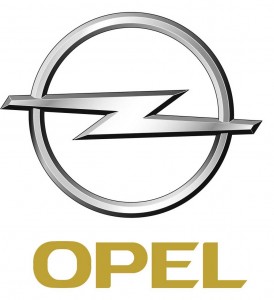
At least three bidders are blitzing Opel with takeover bids. It could take General Motors months to decide on a winning offer.
At least three potential buyers have submitted bids that could lead to their acquiring all, or at least a substantial stake in General Motors’ ailing German subsidiary, Adam Opel GmbH. Close sources say a fourth bidder may have submitted an offering of its own through the German government before the Wednesday evening deadline.
“The physical receipt of the bids, I can’t confirm,” said GM’s European spokesman Chris Preuss, but another source indicated they’d been handed over in time to meet the deadline.
So far, only one bidder has confirmed its participation in the process. The Italian automaker Fiat SpA, issued a statement noting it was bidding for both Opel and GM’s British counterpart, Vauxhall.
Other investors believed to be seeking all or part of Opel include the U.S. investment fund, Ripplewood, which has, among its team the former Chrysler Corp. President Tom Stahlkamp. And the Canadian-based automotive mega-supplier, Magna International, is also bidding, a senior source confirmed to TheDetroitBureau.com. Who the late bidder might be remains a mystery.
Each of the three “has its advantages and disadvantages,” according to a senior insider. Fiat has been the most open aggressive bidder and arguably offers the grandest plans for bringing Opel into its fold.

German officials hope a new owner would better ensure jobs and taxes from Opel's struggling plants.
Barring some late setback, Fiat is set to effectively gain control of Chrysler, if and when it emerges from Chapter 11 bankruptcy protection. With the addition of Opel, the Italian maker’s North American-educated CEO, Sergio Marchionne, hopes to create what one observer described as a “global automotive powerhouse,” selling as many as 6.5 million vehicles annually, worldwide, positioning it among the top five or six global automakers.
“Should this transaction be concluded, a new company encompassing the activities of Fiat Group Automobiles (including its stake in Chrysler) and Opel would be created,” a statement from Fiat headquarters, in Turin, said.
There’s significant overlap between Fiat, Chrysler and Opel, but by eliminating duplication and redundancy, the Italian maker has suggested it could immediately trim costs by as much as $3 billion. On the downside, it is looking to avoid putting up any cash for Opel, the same sort of arrangement it has proposed with Chrysler. Eventually, it could hold as much as 35 percent of the “new” Chrysler, post-Chapter 11.
While Fiat officials indicate their intent to keep all key Opel plants operating, there’s concern, particularly within German circles, that this would not be possible, and that’s led some government and union leaders, including Klauss Franz, Opel’s powerful labor boss – and a member of the company’s union/management Supervisory Board – to lend their support to the Magna bid.
The Canadian company produces a vast array of automotive componentry, but it also has experience assembling automobiles at a highly-flexible assembly plant in Graz, Austria.
“In my opinion they’ve developed the better plan,” Hendrik Hering, economy minister for the German state Rhineland-Palatinate, told the Associated Press.
 GM insiders also appear to be more inclined to favor Magna, at least for the moment. One of the big concerns about selling Opel is that it would limit the German operations ability to serve as a product development center for the rest of General Motors’ global empire. Opel is working up a number of new products, including next-generation midsize passenger cars for the United States. But such programs might be curtailed if Fiat were to take a controlling stake, GM fears.
GM insiders also appear to be more inclined to favor Magna, at least for the moment. One of the big concerns about selling Opel is that it would limit the German operations ability to serve as a product development center for the rest of General Motors’ global empire. Opel is working up a number of new products, including next-generation midsize passenger cars for the United States. But such programs might be curtailed if Fiat were to take a controlling stake, GM fears.
Then there’s Ripplewood, which vaguely resembles the private equity giant, Cerberus Capital Management, which acquired Chrysler from its former German parent, Daimler AG, in 2007. “They’d most likely acquire Opel with an eye towards selling it off, again, in a few years,” said a well-placed industry source. Indeed, it appears GM might like that idea because it would allow Ripplewood to fix the long-troubled German operation then, potentially sell it back to a newly re-energized General Motors.
A source close to the dealings cautioned that who is in the “lead” could change as details are worked out. In fact, GM could choose to move forward with more than one potential buyer, once it looks over the bids. Critical, for whomever hopes to move ahead, will be the need to ensure that GM gets the financial assistance it has been seeking from Germany and other European governments to keep Opel going during the current fiscal crisis.
How long it will take to examine and respond to the bids is unclear, though the process is expected to move ahead through the summer. Meanwhile, there’s a growing likelihood that GM will file for bankruptcy itself before then, here in the United States.

May 22, 2009 17:00 ET, Magna confirms offer for Opel
AURORA, ON, May 22 /PRNewswire-FirstCall/ — Magna International Inc. (TSX: MG.A, NYSE: MGA) today confirmed that, together with Sberbank Rossii (“Sberbank”), it has submitted a non-binding indicative offer for Opel. The offer contemplates a total investment by Magna and Sberbank of Euro 700 million, a portion of which would be guaranteed by the German government.
Under the offer, the proposed equity interests in Opel would be: General Motors – 35%; Sberbank – 35%; Magna – 20%; and Opel employees – 10%.
General Motors and the German government are reviewing and considering offers submitted this week and will determine the next steps in the sale process.
There is no assurance that any transaction will result from Magna’s current involvement.
We are the most diversified global automotive supplier. We design, develop and manufacture technologically advanced systems, assemblies, modules and components, and engineer and assemble complete vehicles, primarily for sale to original equipment manufacturers (“OEMs”) of cars and light trucks. Our capabilities include the design, engineering, testing and manufacture of automotive interior systems; seating systems; closure systems; body and chassis systems; vision systems; electronic systems; exterior systems; powertrain systems; roof systems; as well as complete vehicle engineering and assembly.
We have approximately 70,000 employees in 240 manufacturing operations and 86 product development, engineering and sales centres in 25 countries.